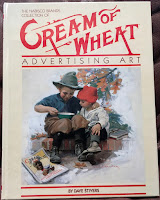An association of German illustrators called IO Remote just released this video interview (in English) with me.
At 20 minutes in, they ask about digital tools and AI images, a topic that has been bouncing around the illustration world lately.
An association of German illustrators called IO Remote just released this video interview (in English) with me.
At 20 minutes in, they ask about digital tools and AI images, a topic that has been bouncing around the illustration world lately.
Sleeping pigs, pencil and gray wash
These pigs enjoy a summer afternoon on the barn floor. They twitch in their sleep as they dream about running, rooting, and eating.John Oliver and his team produced this witty video explaining text-to-image systems like Midjourney.
I don't do TikTok, but the Instagram platform is pushing us all toward TikTok-like short, vertical videos.
Dinotopia: The World Beneath is available as an immersive podcast with actors, music, sound effects and dinosaur voices.
I sketched these at a car show, replacing people's heads with their cars, and jotting down random comments.
This costume sketch class is drawing a model in a Civil War costume. In the far room, plaster casts are standing in the soft light.
It's a mixed group of men and women, with men sitting in the front row. They're working from the light of a skylight, just visible in the upper left. The room is set up for electric light as well. The upper electric light has a curved blocker to keep the light from spilling into the far end of the room.
---
Thanks, Kev!

Realistic portraits adorned the tops of the caskets in Roman Egypt.
Modern researchers are carefully scraping off bits of paint and discovering the mix of wax and pigments. They're even using machine learning models to understand the patterns of brushstrokes.
But they're not much closer to knowing who the artists were or what they were thinking.
 A cache of over 500 drawings and paintings were discovered, locked in metal storage cabinets at the old company headquarters. Long believed lost, these prime examples of advertising art were a surprise to illustration historians.
A cache of over 500 drawings and paintings were discovered, locked in metal storage cabinets at the old company headquarters. Long believed lost, these prime examples of advertising art were a surprise to illustration historians.


Fritz Willis and Joe DeMers were two young artists who collaborated in an interesting way.
In 1946, they were picked by Esquire magazine to create the inaugural illustration for a new feature called "Esquire Gallery of Glamour."
They decided to work together on it and to sign both their names to the result. According to a 1951 newspaper article quoted in Illustration magazine:"They worked closely together, Joe sketching the left eyelid, Fritz the blue in the white eyeball, Joe the left toe, and Fritz the fourth one. Or they might each work on a complete section. DeMers himself explained one cooperative effort: 'Fritz took the arms. I took the face, then he did the feet and I painted the legs.'"
The new issue of Illustration includes a big article on Fritz Willis, famous for his brilliant pin-ups. It also features paperback cover illustrator Raymond Johnson, with an extensive biography and showcase of his work, plus an academic article called "The Delineation of Desire in 1920s Commercial Illustration."
Take a look at this picture. What do you see? When you look at it again, do you see something else?
Most people see a man, off balance, running into a snowy forest. Then after looking again, they see a dog running toward us. Some people see the dog first and have a hard time seeing the human.
What's going on is that there are two opposite streams of information processing going on in your brain. One stream is like a camera. Light enters your eye and resolves into shapes and patterns that move to the back of the brain and up through the cerebral cortex to higher level processing.
But while this is going on, the brain is constantly generating theories of what it's seeing and delivering those theories down the pipeline, optimizing what you're actually seeing to fit its dominant conception.
All along you're reality-checking the top-down theory against the information coming up the pipeline from the eyes.
If the first top-down reading doesn't continue to fit the bottom-up facts, you start generating new interpretations.
A similar process happens with auditory processing when you hear a gunshot...or was that a firecracker?...or was someone popping a paper bag? You can feel your adrenaline surge when you think it's a gunshot, and all that changes when you realize it isn't.

